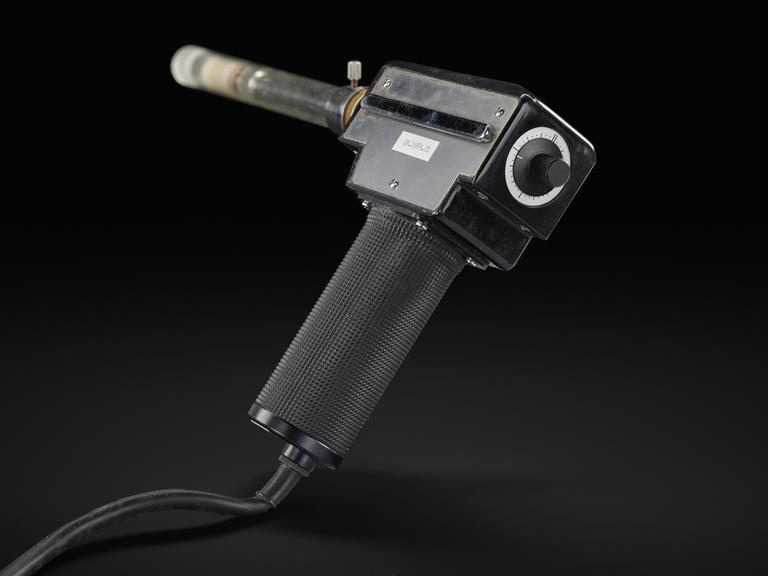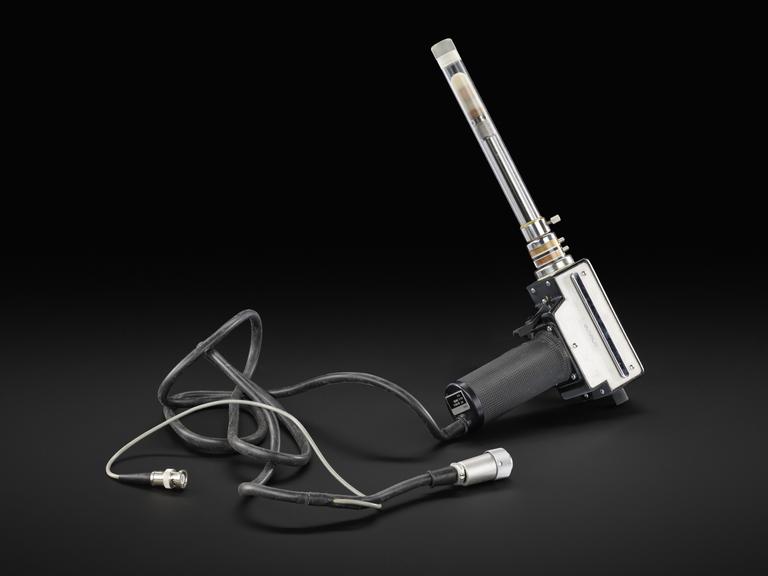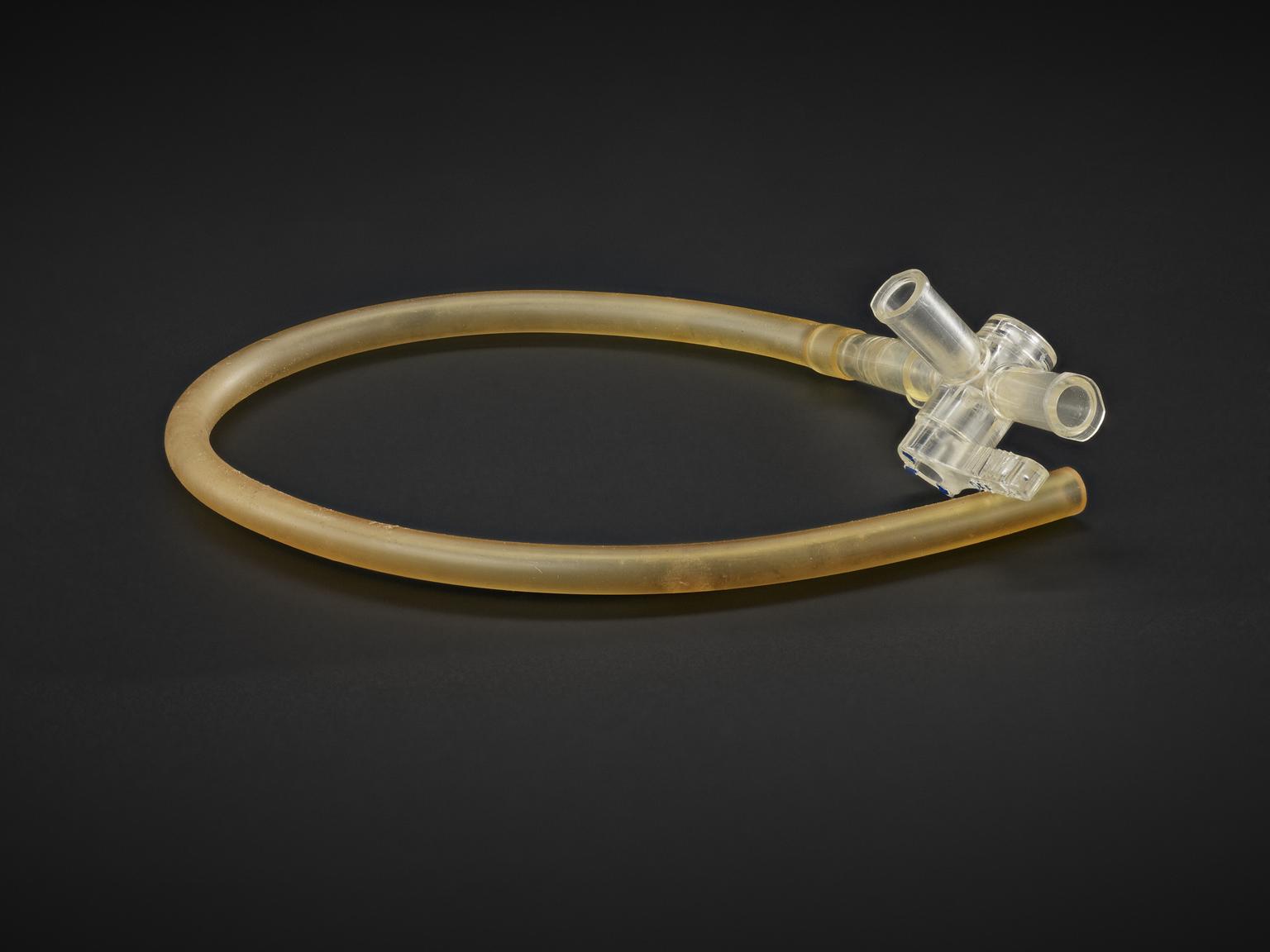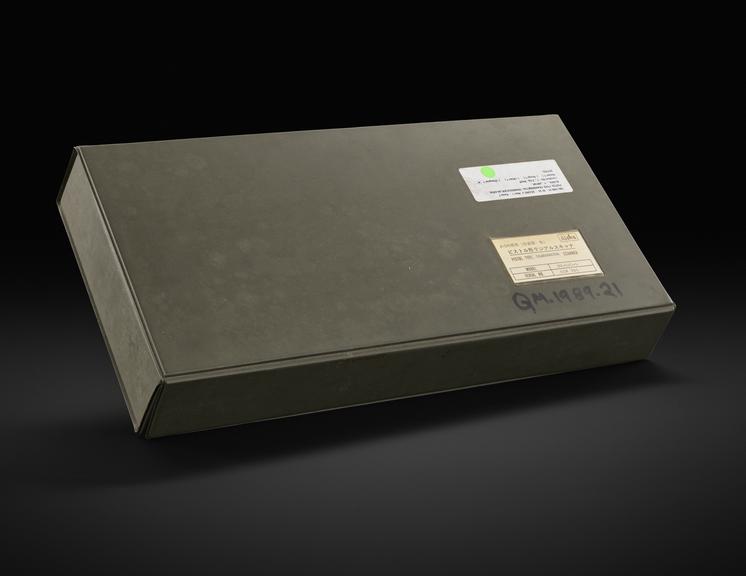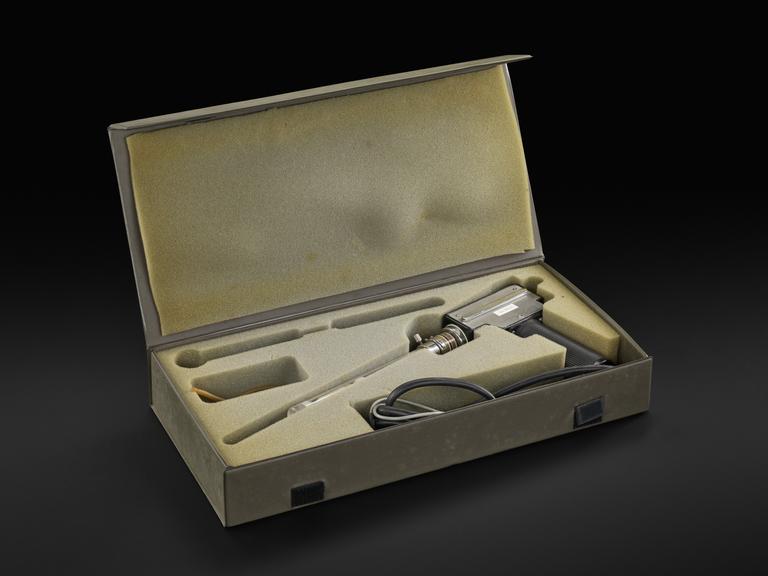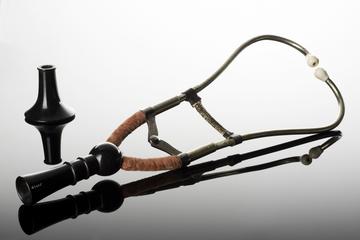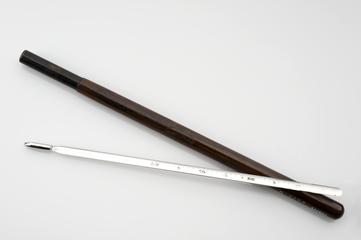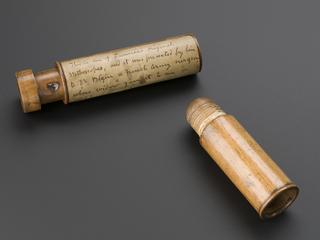Pistol type transrectal transducer
Pistol type transrectal transducer,model number SU-510-5, serial number 01M 785, in carry case made by Aloka, Japan
More
This ‘pistol type’ transrectal transducer was used to diagnose changes in the prostate. Transrectal ultrasound (TRUS) is an imaging technique where a lubricated probe is placed inside the rectum. The probe gives off sound waves, which bounce off structures and organs inside the body and are picked up by the probe. Connected to a computer, the sound waves are converted into an image which healthcare professionals use to understand any changes to the prostate and whether further tests including biopsies are needed.
- Measurements:
-
overall: 70 mm x 450 mm x 225 mm, .08 kg
- Materials:
- metal , rubber , plastic and electronic components
- Object Number:
- 2023-487/1
- type:
- transducer
- Image ©
- The Board of Trustees of the Science Museum
